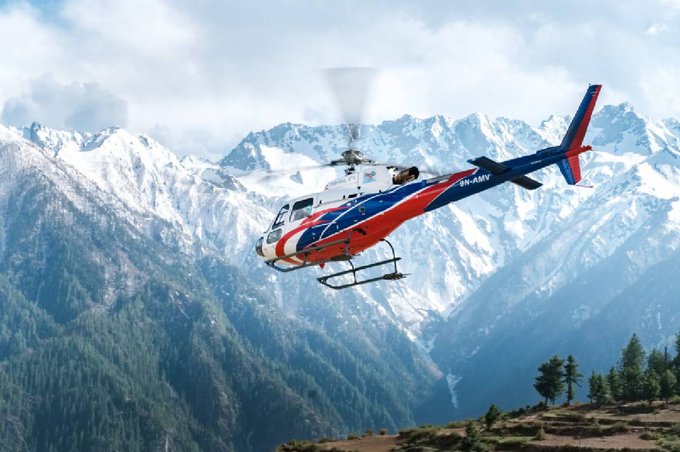
Nepal: After deadly crash, 'non-essential' helicopter flights banned

Following a tragic helicopter crash in the Everest region that claimed the lives of six individuals including five Mexican tourists and a local pilot, Nepal’s aviation regulator has introduced a two-month ban on “non-essential” helicopter flights, including sightseeing trips.
This decision aims to enhance safety measures and prevent any further accidents.
The crash occurred when a privately operated Manang Air helicopter, which had been used for viewing Himalayan peaks, including Mount Everest, crashed during its return journey.
Also read: Helicopter with six on board crashes near Mount Everest in Nepal; 5 bodies recovered
“Non-essential flights like mountain flights, external load operations (sling flights) and showering of flowers by helicopters (will) be restricted till September,” the Civil Aviation Authority of Nepal (CAAN) said in a Twitter post late on Wednesday (July 12).
Civil Aviation Authority of Nepal (CAAN) has issued new regulations to ensure the safety of helicopter flights. pic.twitter.com/8JLFzqbnzy
— Civil Aviation Authority of Nepal (@hello_CAANepal) July 12, 2023
As Nepal experiences the monsoon season from June to September, the country has established an investigation committee to determine the cause of the recent crash on Tuesday.
Being the home of eight of the world’s 14 tallest mountain peaks, including Mount Everest, Nepal faces many challenges in aviation due to inhospitable terrain.
Also read: Will take ties with Nepal to Himalayan heights: PM Modi after talks with Prachanda
Many airlines operate flights to small airports located in remote hilly areas and near peaks that are frequently covered in clouds.
In January, Nepal experienced its most devastating air crash in three decades, resulting in the loss of 71 lives when a plane went down close to the popular tourist city of Pokhara.
Since the year 2000, prior to the recent crash on Tuesday, the country has witnessed a total of 18 air crashes that claimed the lives of 350 individuals in the country.
(With agency inputs)


